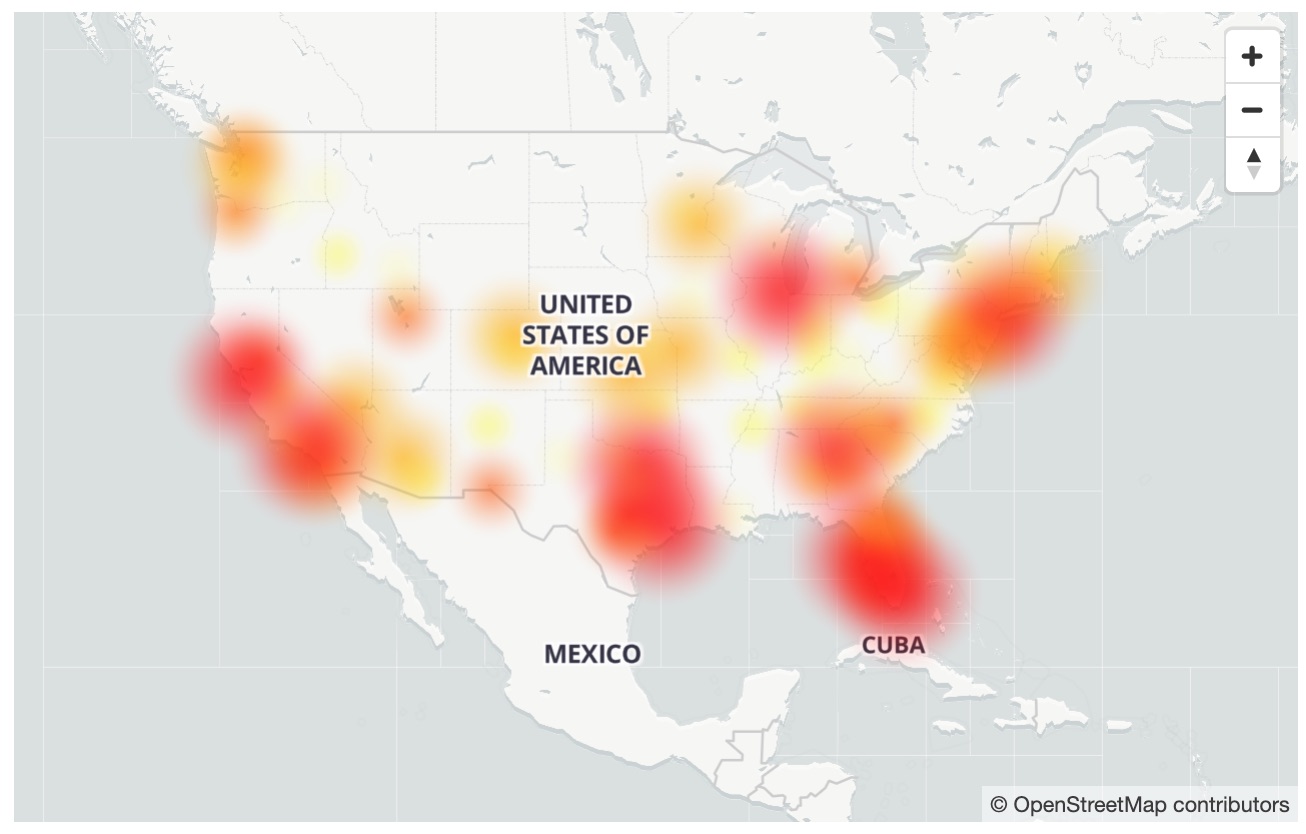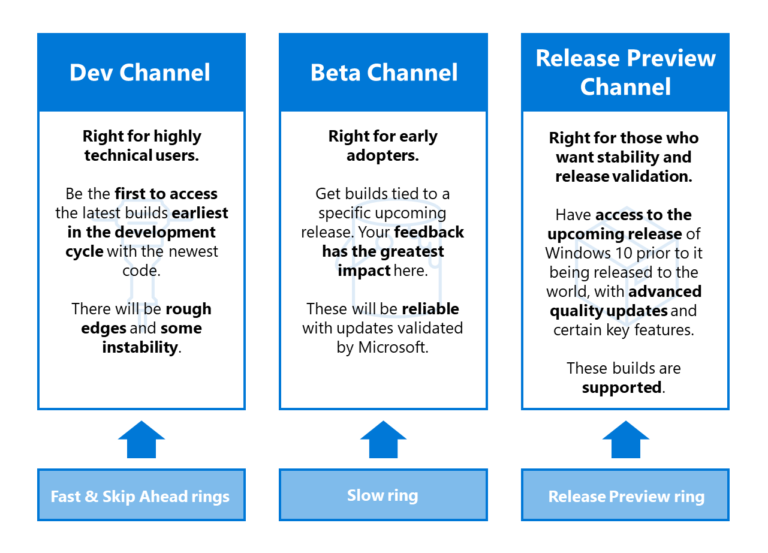The Station is a weekly newsletter dedicated to all things transportation. Sign up here — just click The Station — to receive it every Saturday in your inbox.
Hi friends and first-time readers. Welcome back to The Station, a newsletter dedicated to all the present and future ways people and packages move from Point A to Point B. I’m your host Kirsten Korosec, senior transportation reporter at TechCrunch.
COVID-19 hasn’t gone away, in case you were wondering. And yet, city, county and state governments are continuing to reopen economies, some slower than others. The quiet and sleepy streets of metro areas around the world are bustling once again. Yep, congestion is back and in some areas already worse than pre-COVID. Take San Francisco, as an example. The San Francisco County Transportation Authority launched a congestion tracker that provides a week-by-week look at vehicle speeds on its network. Check it out and see how it has changed.
The photo below of a highway system in the Los Angeles area provide a reminder about how COVID-19 and the stay-at-home orders that followed decreased traffic.

Image Credits: Patrick T. Fallon/Bloomberg via Getty Images / Getty Images
We’ll be tracking in the weeks and months to come, whether cities will keep some of the pedestrian, biking, scooter friendly initiatives put in place during the COVID-related lockdowns. We expect it will be a mixed bag, and highly dependent on just how squeaky those wheels are (we’re talking about pressure from residents, activists and the business community).
One highway project worth watching is the $7 billion project to rebuild most of the Houston’s downtown freeway system and reroute and expand Interstate 45. A new impact study reveals that “158 houses, 433 apartments or condos, 486 public housing units, 340 businesses, five churches and two schools” would have to be destroyed to expand the highway, the Houston Chronicle reported.
Here’s what is worth understanding about this project, which Streetsblog notes, the buildings slated for demolition are disproportionately located in low-income communities of color, including many within the borders of Texas’s first black-formed municipality, Independence Heights. Highway projects are often viewed as signs of progress. The Interstate Highway System also decimated entire communities in the pursuit of that progress. Check out Changing Lanes: Visions and Histories of Urban Freeways for a deep dive.
Reach out and email me at kirsten.korosec@techcrunch.com to share thoughts, criticisms, offer up opinions or tips. You can also send a direct message to me at Twitter — @kirstenkorosec.
Alright, time to dig in. Vamos.
Micromobbin’

Spin made its first foray into Europe with the launch of its electric scooters in Cologne, Germany. In the coming weeks, Spin will deploy additional scooters in Dortmund and Essen. Competitor Bird began its expansion into Europe back in August 2018, while Lime has operated electric scooters in Europe since June 2018.
Meanwhile, Wheels redeployed its scooters equipped with self-sanitizing handlebars and brake levers in Los Angeles, San Diego, Dallas, Austin and Orlando. This came after the company temporarily paused its services in March due to COVID-19. Additionally, Wheels announced a donation program to honor George Floyd. For the first eight minutes and 46 seconds of all riders’ first ride through June 17, 2020, Wheels will donate all of the proceeds to the NAACP Legal Defense Fund, the Equal Justice Initiative, Color of Change and the ACLU.
— Megan Rose Dickey
Deal of the week

This week was overflowing with unusual deals. But hey, we live in a world where the NASDAQ composite surpassed the 10,000-point milestone despite such piddling details as the U.S. economy formally being in a recession and a persistent global pandemic.
Let’s start with rental car company Hertz, which received approval Friday from a judge handling its bankruptcy to sell up to $1 billion in stock. Here are the important details. Hertz filed for Chapter 11bankruptcy protection in late May. On Thursday. Hertz made an emergency request to sell up to 246.8 million unissued shares to Jefferies LLC. A judge approved the request.
Hertz stock has been on a wild ride and the retail investors, particularly Robinhood users, appear to be the passengers in the front seat — cheering along despite the likelihood that this equity could soon be wiped out. Read more below for a deeper breakdown into the numbers.
If you’re wondering what’s cooking in the food delivery industry, I can tell you that there is only one special on the menu: consolidation with extra Sriracha. It’s getting spicy!
The latest example is Just Eat Takeaway, which reached an agreement to acquire Grubhub in the U.S. in an all-share deal for an enterprise value of $7.3 billion. The deal comes fresh off the heels of Just Eat’s merger with the Netherlands’ Takeaway.com. This tie-up is juicy, and not just because it’s a big piece of M&A in food delivery. It also resulted in a competitive swipe at Uber Eats, which had been working on and off with Grubhub for more than a year to acquire the company, according to a source familiar with the deal.
Here are the numbers: Grubhub shareholders will get 0.6710 Just Eat Takeaway.com ordinary shares in exchange for each Grubhub share, representing an implied value of $75.15 for each Grubhub share (based on the undisturbed closing price of Just Eat Takeaway.com on June 9, 2020 of €98.602). This gives Grubhub a total equity consideration (on a fully diluted basis) of $7.3 billion.
The deal caps off a tumultuous period for Grubhub, which was also created through a combination with another rival, Seamless. Keeping up? Good, you can expect more of this.
Uber might have been bitten by Grubhub, but it’s not going to skulk away from the food delivery industry. The ride-hailing business offloaded its micromobility play Jump and has doubled down on food delivery with its Eats business. Uber still sees consolidation of the food delivery industry as a path to profitability. The upshot: Uber is sniffing around for the next available candidate.
Other deals that got our attention ….
Instacart secured $225 million in a round led by DST Global and General Catalyst. Existing investor D1 Capital Partners participated in the round, which brings Instacart’s valuation to $13.7 billion.
Upstream Security secured an expansion of its Series B funding with an investment by Salesforce Ventures. The undisclosed amount is in addition to $30 million previously invested by Alliance Venture Capital (Renault, Nissan, Mitsubishi), Hyundai, Nationwide Insurance, Volvo Group and others. While the company wouldn’t share exactly how much Salesforce invested sources told us it’s in the “few millions.”
Lillium, the German startup that’s designing an all-electric vertical take-off and landing aircraft to ferry passengers within and between cities, picked up an additional $35 million in funding. The capital is an extension to a $240 million round Lilium announced in March and notably brings in Baillie Gifford, the storied Scottish venture firm that has backed the likes of Tesla and SpaceX, Spotify and Airbnb, among others.
Dr. Remo Gerber, Lilium’s chief commercial officer, confirmed in an interview that Lilium is in talks to add more to the round. That would be in line with what sources told us last year, when we reported that Lilium was looking to raise more like $400 million-plus. For those keeping track, the total raised so far is more than $375 million, at a valuation that sources very close to the company confirm is now over $1 billion.
Viaduct, a startup that uses machine learning to provide analytics on connected vehicle data, raised $11 million in Series A funding led by Innovation Endeavors and joined by Exor Seeds and Box Group. The startup, founded by CEO David Hallac, includes a mashup of machine learning academics from Stanford and Georgia Tech and former employees of Tesla, Facebook, Google Brain, Medallia and Boeing.
The software was developed to help automakers unlock all that connected vehicle data they’ve been collecting and turn it into revenue-generating services and features. The software analyzes the trove of data collected from the increasingly large number of connected vehicles so that OEMs can offer services such as predictive maintenance, personalized in-vehicle experiences and usage-based insurance.
BMW i Ventures announced an investment in Prometheus Fuels, an energy company removing CO2 from the air and turning it into zero-net carbon gasoline that it will sell at gas stations. BMW i Ventures did not disclose the amount of the investment.
Vroom, the online vehicle marketplace, raised $468 million in its IPO. The company had planned to price its IPO between $15 and $17 per share, according to the filing. But instead, it priced 21.3 million shares at $22 for fully a diluted market value of around $2.8 billion.
Vroom is another example of investors seeming to focus on growth metrics and ignoring everything else. The company’s gross margin fell from 7.1% in 2018 to 4.9% in 2019 and its net losses (not counting accretion of redeemable convertible preferred stock) rose from $85.2 million in 2018 to $143 million in 2019. Those deficits continue to rise. However, the company’s Q1 revenue grew from $235.1 million in 2019 to $375.8 million (+60%) in 2020.
What we have here is not merely another unprofitable unicorn, Alex Wilhelm wrote earlier this week after looking through the numbers. Nope, we have a very low-margin, unprofitable unicorn that is still drawing enough investor interest to raise its IPO range. The upshot? Growth is once again hot as hell.
Layoffs, business disruptions and people
This section is often dominated by layoffs. But this week, there were some notable hires.
Rivian, which last week we reported had laid off off 40 employees from its Plymouth, Michigan headquarters and hired some key executives, is back at it again. This time, Rivian has hired away a rising star at GM. Alex Archer, who was GM’s design engineer, is now working at Rivian as a design and release engineer, the Detroit Free Press reported. Archer is a 2015 Stanford University graduate who led the invention of the power sliding console that is in the 2020 models of the GMC Yukon and Yukon XL, Denali, Chevrolet Tahoe and Suburban full-size SUVs.
Cruise has not let off the throttle in its pursuit to hire as many engineers and technical experts as possible. Last week, we wrote about Cruise co-founder and CTO Kyle Vogt sending an email to employees at Zoox with a direct appeal to join his company. We’re not sure how that effort is going, although we’ve heard it didn’t sit well with many Zoox employees.
But it appears the company was able to poach Louise Zhang from the clutches of electric vehicle startup Lucid Motors. Zhang, who was also a former engineer at Tesla, is now Cruise’s vice president of product safety. This is a new position at Cruise. Interesting side note: Zhang, who Ph.D. in mechanical engineering from Missouri University of Science and Technology, has also worked as a forensic consultant, advising attorneys on litigation involving complex real-world crashes.
Uber appointed Pradeep Parameswaran, who oversaw the ride-hailing giant’s business in India and South Asia for two years, as the regional general manager of its Asia Pacific region operations. Parameswaran will be tasked to improve Uber’s presence in the nine nations in the Asia Pacific region where the company currently operates.
Nikola Motor Corporation has added two industry veterans to its executive team. Pablo Koziner left Caterpillar and will now lead Nikola’s hydrogen fueling and battery charging business as president of Nikola Energy. Mark Duchesne has been hired as global head of manufacturing. Duchesne worked at Toyota for 22 years and five years at Tesla.
Notable reads and other tidbits

Ah, the catch all for everything else to do with the future of mobility — and even what’s happening in regular old conventional transportation.
Ride-hailing
Uber is launching its Uber Cash digital wallet feature in Sub-Saharan Africa through a partnership with San Francisco-based and Nigerian-founded fintech firm Flutterwave. The arrangement will allow riders to top up Uber wallets using the dozens of remittance partners active on Flutterwave’s Pan-African network. In the article, TechCrunch’s Jake Bright also provided an update on Uber’s operations in Africa, including that the company is experimenting with impact-safe plastic dividers for its cars in Kenya and Nigeria.
It’s electric
Nikola Motor, the Arizona startup that made its debut as a publicly traded company June 4, will open reservations later this month for a hydrogen fuel cell electric pickup truck that was designed to compete with the Ford F-150. Reservations, or pre-orders, will open June 29 for the hydrogen-electric pickup truck known as the Badger.
Nikola Motor founder and chairman Trevor Milton told TechCrunch that the Badger will to go into production in 2022. But Nikola doesn’t plan to produce the Badger on its own, according to Milton. Instead, the company plans to partner with an OEM, which Milton said will be revealed later this year.
Ford released new details on its 2020 Escape plug-in hybrid. This is the first plug=in version of the Escape and Ford is clearly aiming to compete with Toyota’s new RAV4 PRIME plug-in. (Stay tuned for a review of the RAV4 PRIME by the way). The Escape plug-in hybrid comes with an EPA-estimated 37 miles of all-electric driving range and 100 miles per gallon equivalent.
Volkswagen started to sell a home-charging device as the automaker prepares to bring its new ID family of electric vehicles to market. The ID.3 is the first electric vehicle under the ID label and will only be sold in Europe. Customers who made reservations for the launch edition, known as ID.3 1st, will be able to order their vehicle starting June 17. Volkswagen said this week that the deliveries for the ID.3 1st will begin in September.
Lordstown Motors plans to reveal its Endurance electric pickup truck in a virtual event during the week of June 22, CNET’s Roadshow reported.
AV news
David Zipper, a startup and policy adviser who focused on city planning, spotted and then tweeted an interesting provision buried within the House Democrats’ transportation bill. The draft bill states that federal funds can’t be used for any automated vehicle providing public transit unless that provider can show it doesn’t “duplicate, eliminate, or reduce frequency of” existing service. As Zipper smartly notes, “that would create a huge barrier to AV transit projects.”
WHILL, the Yokohama, Japan-based developer of autonomous wheelchairs, is gaining some traction amid the COVID-19 pandemic. The company noted this week that Tokyo’s Haneda Airport will be using the WHILL Autonomous Drive System to help passengers with reduced mobility travel between gates. The implementation is still fairly limited, serving gates three through seven at the world’s fourth busiest airport.
WHILL cites concerns over the spread of COVID-19 as a major factor in the acceleration of the adoption, following 11 trials that have served around 400 passengers since 2019.
The U.S. Department of Transportation is launching of the Automated Vehicle Transparency and Engagement for Safe Testing Initiative. The agency said the AV TEST Initiative aims to increase transparency by providing an online, public-facing platform for sharing automated driving system on-road testing activities and other pertinent information with the public. Online mapping tools will eventually show testing locations at the local, State, and national levels, as well as testing activity data, such as vehicle types and uses, dates, frequency, vehicle counts, and routes.
The USDOT will host this coming week — starting Monday June 15 —a series of virtual kickoff events aimed at raising awareness of Automated Driving Systems development and testing activities. There are three days of events. Check it out here.
Miscellaneous bits
United announced the addition of 219 touchless check-in kiosks across the U.S. The new check-in option was one of a number of initiatives announced as part of the carrier’s CleanPlus strategy of addressing travel during the pandemic.
Honda confirmed a cyberattack that brought parts of its global operations to a standstill. The company said in a brief statement Tuesday that the attack caused production issues outside of its headquarters in Japan. Details of the attack are slim. An earlier report suggests that the Snake ransomware is the likely culprit. Snake, like other file-encrypting malware, scrambles files and documents and holds them hostage for a ransom, expected to be paid in cryptocurrency.
Google Maps has added new features to better inform travelers and commuters about how their trip may be impacted by COVID-19, including travel restrictions, COVID-19 checkpoints or even the crowdedness of public transport. It’s also adding features that will help those traveling to COVID-19 testing centers better understand the eligibility and facility guidelines.
Studies!
We read them, so you don’t have to. But we also include links in case you want to explore further.
Kodiak Robotics is the latest AV startup to release a voluntary self assessment safety report. The 49-page report digs into what the company does, how and why. I will offer a deeper dive next week; I spoke to the founders and talked about their approach to structured highway driving. Stay tuned. In the meantime, the company also published a few blog posts.
MIT researchers conducted a theoretical study and found that changes in how roads are resurfaced could improve gas mileage for heavy vehicles and reduce greenhouse gas emissions. The researchers, whose study is detailed in a paper in the journal Transportation Research Record, examined state-by-state data on climate conditions, road lengths, materials properties, and road usage, and modeled different scenarios for pavement resurfacing practices.
A key takeaway is that making pavements stiffer improves mileage efficiency. Making roads stiffer can be accomplished in a few different ways, including adding a small amount of synthetic fibers or carbon nanotubes to the mix when laying asphalt or to adjust the grading of the different sizes of aggregate used in the mix. The study also said switching from asphalt pavement surfaces to concrete, which has a higher initial cost but is more durable, would lead to equal or lower total lifecycle costs. Important side note: The research was supported through the Concrete Sustainability Hub by the Portland Cement Association and the Ready Mixed Concrete Research and Education Foundation.
Global consulting firm AlixPartners released new research last week (sorry folks, I missed this one) forecasting that the automotive industry faces a cumulative volume drop of up to 36 million vehicles this year through 2022 (compared with sales in 2019), as well as a burden of $72 billion in new debt added since early March of this year. The AlixPartners Global Automotive Outlook: Mastering Uncertainty study also predicts that automaker sales globally will be 70.5 million vehicles this year, with sales in the United States hitting 13.6 million units.
The broad study covers the supply chain, auto sales and the future of transportation (you have to contact the company for the complete study). AlixPartners notes that industry investments in autonomous vehicles were scheduled to be $79 billion cumulatively from 2020 through 2025. The firm confirmed what we’re already seeing and hearing: that spending rate will likely be pared back substantially.
AlixPartners global sales forecast for this year includes what the firm calls a “mixed-speed recovery,” with China recovering the fastest, to 23 million units; followed by the U.S., at 13.6 million; and Europe at just 14.1 million. And finally, AlixPartners doesn’t see global sales returning to the recent-peak levels seen in 2017 until after 2025.
Review: Bentley’s new Flying Spur

Why does Matt Burns get all the luxury rides? Who knows. But follow on for a fun ride.
Here’s a bit of teaser:
The Bentley new Flying Spur is a luxury super sedan. It packs a larger engine than most sports cars, has four heavenly seats and glides over the road like soap on a shower floor. This example costs $279,000, so I would expect nothing less.
This sedan is supremely comfortable, and yet it packs a powerful punch. Bentley says the W12 engine lets it hit 207 mph though I had no reason to verify that claim. Going fast means arriving at a destination sooner and, during my week with the new Flying Spur, I never wanted the ride to end.

Source: Tech Crunch

















